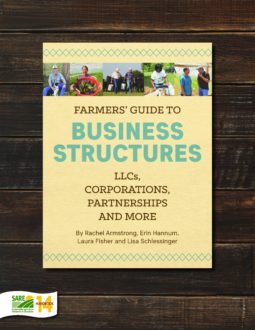

Sole proprietorships do not have organizing documents. This would be rather futile–there’s just one owner, so they get to make all the decisions for how to run the operation and don’t need guidelines on voting and such. However, partnerships have the option to create a partnership agreement to outline the relationship. The partnership agreement allows the partners to establish the share of profits and losses that each partner will take, the responsibilities of each partner and what will happen to the business if a partner leaves. If a partnership agreement is not in place, or if it is not thorough, state partnership statutes will fill in the blanks and determine what rules govern in such scenarios. The benefit of having a partnership agreement is that you can decide what is best for your farm operation and your relationship, rather than relying on your state’s fallback rules.
Key issues to consider and include in a partnership agreement
The following highlights some important topics that farmers should discuss with their business partners and ideally put into writing through a partnership agreement:
While some of these issues are challenging, and most likely folks won’t want to talk about them, it’s best if partners take the time to work through them at the outset. Even if the state’s default partnership laws would work fine, going through the process of creating a partnership agreement will help create shared expectations and clearer lines of communication as well as make things much easier should these challenging issues arise. Overall, a partnership agreement can help foster a stronger, more resilient farm business for the long haul.
A model partnership agreement is not provided in this Guide, as most farm operations prefer the LLC structure if they’re going to go through the trouble of creating an organizing document. The LLC is taxed the same way as the general partnership, and for all intents and purposes operates in a similar way. Also, the issues and contents of a partnership agreement and the LLC’s operating agreement are very similar. If you decide to stick with a general partnership but decide to prepare a partnership agreement, refer to the chapter on LLCs (Chapter 4). Section 1 of the LLC chapter includes a thorough discussion on what issues should be included in an operating agreement, which is for the most part the same for a general partnership. Section 2 includes two sample LLC operating agreements– Brief Operating Agreement for Married Couple Farm, LLC and Extensive Operating Agreement for Sun Sisters Farm, LLC–as well as a checklist: Preparing Your Farm’s Operating Agreement. These resources serve as helpful guides to preparing both an operating agreement and a partnership agreement.
This site is maintained by SARE Outreach for the SARE program and is based upon work supported by the National Institute of Food and Agriculture, U.S. Department of Agriculture, under award No. 2021-38640-34723 . SARE Outreach operates under cooperative agreements with the University of Maryland to develop and disseminate information about sustainable agriculture. Any opinions, findings, conclusions, or recommendations expressed in SARE publications are those of the author(s) and do not necessarily reflect the view of the U.S. Department of Agriculture or SARE. USDA is an equal opportunity provider and employer.